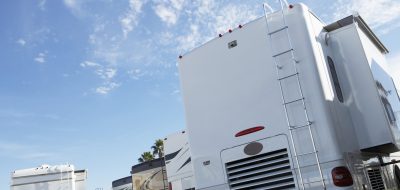Dear Gary,
First of all I enjoy reading your articles. Now, I have a problem with my gasoline Onan generator. My generator surges during idle. The voltage checks out at 110-115 volts AC during idle or load. I’ve cleaned the carburetor, replaced the fuel filter, and replaced both spark plugs, all to no avail. Can you please help me with the carburetor and governor adjustments? It’s an Onan 4000-watt Genset, Emerald Plus.
–Michael Cheatham, (Clinton, SC)
Answer:
Well Michael, it certainly sounds like the governor is out of adjustment; basically hunting around for the proper frequency. At no-load (idle), the frequency should measure around 62 or 63-hertz. Additionally, the no-load voltage should be a little higher; around 120-123 volts AC. Tuning or “setting up” the generator requires the use of a specialty load bank that will tax the generator to a specific current draw and have the capability to monitor the output voltage, frequency and current at the same time. They can’t be tuned by ear.
On your particular generator there are three separate carburetor adjustments and three governor adjustments and they must be monitored and adjusted simultaneously. The load bank is the preferred method. In fact it’s my opinion that using a load bank is the only method. Not all RV service techs, let alone RVers, realize that every mechanical action performed on the carburetor and governor will have a direct electrical response.
Therefore, the only way to adjust the RV generator (properly) is to make such adjustments while monitoring the output voltage and the electrical frequency, while applying a known load in incremental steps. Oh, it can be done from a “ballpark” perspective, but you’d just be guessing and running the risk of harming a myriad of 120-volt AC loads in the coach.
Unfortunately, the generator set-up procedures are too in-depth to fit within the confines of this column, but I do have a possible solution in the form of a training video I developed for professional RV service technicians. If you would be interested in knowing exactly what takes place during a professional generator set-up, “RV Generator Tune-Up/Set-Up Procedures” will show you each step in the process. Send a self-addressed, stamped, long envelope to the column and I’d be happy to send you an order form. If not, I would recommend you find a properly equipped RV generator shop for those finite tweakings that are necessary. Call first to be sure they indeed have a load bank.
(Please feel free to comment, however, please also note that due to the volume of communications I receive from multiple channels I cannot guarantee a personal response in every instance. However, questions of an overall general interest may be considered and published in an upcoming RV Doctor column.)




Donna Kutz
I am sorry this is not regarding this article…but I was wondering if you could advise me on the best battery to replace mind…I own a 2002 Fleetwood Wilderness Travel Trailer 30 ft with a double slide.
Thanks
DFord
I’d still bet the low speed jets are partially clogged and recommend cleaning the carburetor more thoroughly. At no load, the low speed jets come into play – these are the first to get plugged with varnish when gasoline is allowed to set for long periods and dry out. When the load drops off on your generator and the throttle closes down, the low speed jets need to feed enough gasoline to keep the engine running smoothly. If they’re plugged and can’t provide enough fuel, the engine begins to stall. As the speed of the engine drops, the governor opens the throttle and high speed jets take over. The engine speeds up above the governor setting and the governor backs off the throttle again to where the low speed jets cause the engine to stall again – this oscillation continues until more load is applied or you shut it down in disgust.
My off brand generator (with a Kawasaki engine) surged from the day I bought my MH (new – but already months old with plugged jets) till I pulled the carburetor, removed the jets and thoroughly cleaned them. Now it runs just as smooth at no load as it does at full load and everywhere in between – what a joy it is to use now!
Patrick W. Tribbey
Gary, being a former auto & small engine mech., think maybe the surging could be caused by a vacuum leak? I ran across that problem on different types of engines. Sealing the leak solved the problem. Thought perhaps this may also be possible solution. I do remember from my schooling that anything BEHIND the throttle plate that leaks, (that isn’t supposed to), may cause a surging problem. (Between the throttle plate and the engine proper).
Just another idea to work with! 🙂
Jim I
Generator surging. I had that same problem with my gererator in my last motor home. It turned out to be the carborator. Dealer fixed it at no cost, turned out to be a recall from Onan.